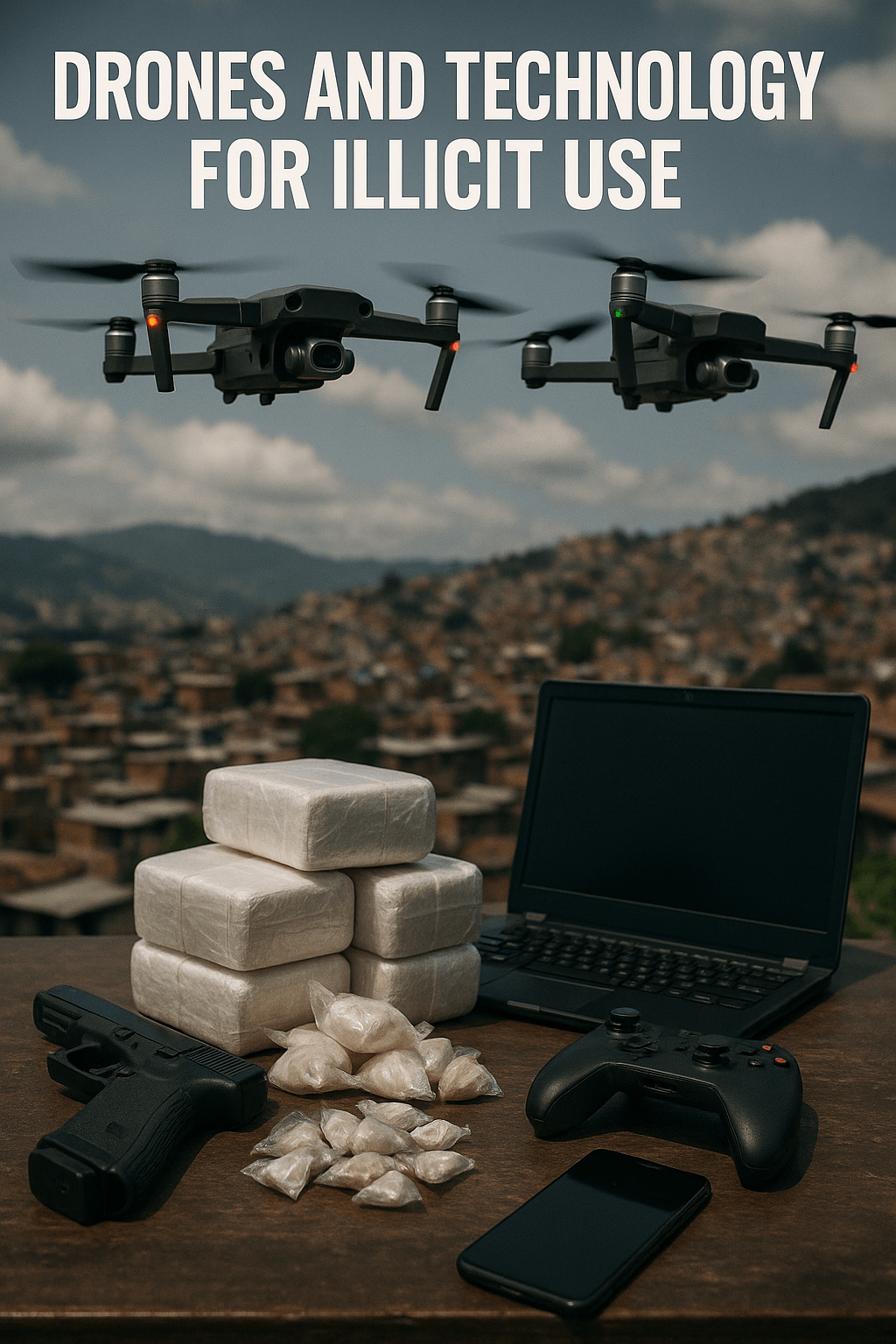Drones and Technology for Illicit Use
Topics / Spotlights
Criminal groups in Latin America and the Caribbean are increasingly using drones for surveillance, smuggling, and weaponized attacks, especially in Mexico and Haiti. This growing threat outpaces current regulations and enforcement, prompting calls for stronger regional cooperation, legal reforms, and counter-drone technologies.
Transnational criminal organizations across Latin America and the Caribbean are rapidly adopting drones for illicit purposes, including surveillance, smuggling, and direct attacks using explosives. Groups such as Mexico’s CJNG and the Sinaloa Cartel have established specialized drone units, using commercially available drones to drop grenades, conduct aerial reconnaissance, and transport drugs or contraband across borders and into prisons. This evolution reflects a broader trend of technological adaptation by organized crime, creating asymmetric threats that challenge traditional law enforcement methods. The region’s weak airspace regulations, limited detection capabilities, and insufficient legal frameworks hinder efforts to counteract these drone operations effectively. In response, experts and analysts are calling for coordinated bilateral and regional strategies that integrate legal, intelligence, and operational components. Strengthening regulatory systems, investing in counter-drone technologies, and improving interagency cooperation are essential to mitigating the expanding threat posed by criminal drone use.


Recommended Reading
Weaponization of Commercial Drones: Criminal groups, notably Mexico’s Jalisco New Generation Cartel (CJNG) and the Sinaloa Cartel, are adapting commercial drones to carry and deploy explosives, including grenades and chemical devices, to attack rivals and intimidate communities.
Expansion of Drone Capabilities: Beyond attacks, drones are employed for surveillance of security forces and transportation of illicit goods. The CJNG’s “Drone Operators” unit exemplifies this trend, using drones to drop chemical explosives, significantly endangering civilian populations.
Regulatory and Enforcement Challenges: The accessibility of advanced drones, such as DJI’s Mavic series, combined with limited airspace regulations in countries like Mexico, complicates efforts to monitor and counteract their use by criminal entities. Authorities are responding by seeking technologies to detect and neutralize drone threats, as evidenced by daily dismantling operations in regions like Michoacán.Julieta Pulcastre Dialogo Americas
Haitian notorious gang leader Jimmy Chérizier, alias “Barbecue,” threatened to use explosive-laden drones in retaliation for the attack by the authorities.
Jalisco Cartel New Generation (Cártel Jalisco Nueva Generación – CJNG), the Sinaloa Cartel, and the Familia Michoacana, have incorporated drones.
Used for: intelligence, surveillance, and reconnaissance, as well as command and control in clashes between cartels, against Mexican state forces, or even against self-defense groups. They have also been used for aerial bombings, direct attacks, and propaganda or psychological warfare operations.
Drones replaced pigeons that were once used to deliver messages and small parcels.
2014, authorities in Brazil have registered drones being used to smuggle prohibited items into prison facilities. Juan Camilo Jaramillo Insight Crime
Podcast and Videos
Interactive Dashboards
Headline at the bottom of the page: “A new police task force reportedly targeted criminal strongholds with drone strikes as authorities sought to quash escalating gang violence; Fritz Alphonse Jean became the new transitional president. Crisis Group
